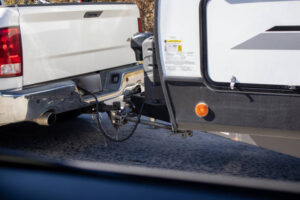
future of flexible packaging trends
The landscape of packaging is undergoing a remarkable transformation. Among the forefront leaders in this evolution stands flexible packaging, a dynamic solution bridging innovation, sustainability, and consumer convenience. The future of flexible packaging trends reflects a growing synergy between technology, environmental consciousness, and market adaptability.
What is Flexible Packaging? Understanding the Basics
Flexible packaging refers to any packaging structure that can readily change shape when filled or closed. Unlike rigid formats, flexible options include bags, pouches, liners, wraps, and films. Made from materials like plastic, paper, aluminum, or their combinations, this packaging style caters to various industries due to its light weight, adaptability, and cost-effectiveness.
Key features include:
-
Versatility: Suitable for solids, liquids, powders, or gels.
-
Customizability: Offers tailored solutions for branding and usability.
-
Durability: Protects contents while being lightweight and easy to transport.
Types and Materials of Flexible Packaging
Flexible packaging encompasses several formats and material combinations. Each is designed based on the product’s protection needs, shelf life, and end-user preferences.
Popular Types:
-
Stand-up pouches
-
Gusseted bags
-
Shrink films
-
Vacuum pouches
-
Sachets and stick packs
Materials Used:
-
Plastic films: PE (Polyethylene), PET (Polyethylene Terephthalate), PP (Polypropylene)
-
Paper-based laminates
-
Aluminum foil composites
-
Bio-based polymers like PLA (Polylactic Acid) and starch blends
Why Flexible Packaging is the Future
Flexible packaging is not just a temporary trend—it’s becoming a vital solution for addressing modern-day packaging challenges. Here’s why:
Sustainability Advantage
-
Requires less raw material, reducing waste and emissions.
-
Lower energy consumption during manufacturing.
-
Decreased transportation costs due to lighter weight.
-
Recyclable and compostable options are growing rapidly.
Functionality & Convenience
-
Easy to open, reseal, and carry.
-
Space-saving and extends product shelf life.
-
Excellent for portion control and on-the-go use.
Cost Efficiency
-
Reduced shipping volume and storage requirements.
-
Shorter lead times and quick adaptation to market needs.
-
Lower per-unit production costs than rigid alternatives.
Industries Driving the Demand for Flexible Packaging
The future of flexible packaging trends is largely driven by sector-specific adoption. Let’s break down how different industries are leveraging this solution:
-
Food & Beverage: Flexible pouches for snacks, dairy, juices, and sauces.
-
Healthcare & Pharma: Sterile barrier systems, blister packs, and sachets.
-
Cosmetics & Personal Care: Travel-size pouches, refill bags.
-
Pet Food: Resealable and durable bags.
-
E-commerce: Tamper-evident and aesthetically pleasing packaging for direct-to-consumer shipping.
The Green Revolution: Sustainability in Flexible Packaging
Environmental sustainability is perhaps the most defining trend in the future of flexible packaging. Companies and consumers alike demand eco-responsibility, leading to innovations in materials and processing.
Emerging Eco-Friendly Trends:
-
Mono-material designs for recyclability.
-
Compostable films made from PLA, PHA, or cellulose.
-
Water-based inks and adhesives with low VOC emissions.
-
Post-consumer recycled (PCR) content integration.
Circular Economy Approach:
-
Encouraging take-back and recycling programs.
-
Closed-loop systems that repurpose flexible packaging waste.
-
Design-for-disassembly enabling material recovery.
Smart Packaging & Digital Innovations
One of the most exciting dimensions of the future of flexible packaging trends is the integration of smart technologies.
Smart Packaging Features:
-
RFID and NFC tags: Enhance traceability and supply chain visibility.
-
Time-Temperature Indicators (TTIs): Monitor product freshness.
-
QR Codes: Direct consumers to product information or digital promotions.
-
IoT Integration: Connects packaging with digital platforms for real-time monitoring.
High-Speed Customization: The Rise of Digital Printing
Digital printing is revolutionizing how brands communicate through flexible packaging.
Benefits Include:
-
Shorter run times and rapid prototyping.
-
Personalization with high-resolution graphics.
-
Low setup cost for multiple SKUs.
-
Brand storytelling directly on-pack.
Digital print flexibility allows companies to be more agile in responding to seasonal, regional, or promotional demands.
Automation and AI: Transforming Flexible Packaging Production
The manufacturing process for flexible packaging is being significantly enhanced by automation, AI, and machine learning. These technologies contribute to faster production cycles, increased precision, and lower error rates.
Key Developments in Packaging Automation:
-
Robotic arms for filling and sealing pouches with high-speed efficiency.
-
AI-driven quality control to detect defects in real-time.
-
Predictive maintenance to minimize downtime.
-
Digital twins and simulation tools for optimizing line performance.
These improvements not only boost productivity but also align with the increasing need for smart factories—a pillar of Industry 4.0.
Barrier Protection: Enhancing Shelf Life with Innovation
Preservation is a core requirement across all packaging applications. In flexible packaging, barrier technology is advancing rapidly to ensure products stay fresh and safe.
Advanced Barrier Features:
-
Multi-layer laminates combining PET, aluminum, and EVOH.
-
Oxygen and moisture scavengers to control the internal atmosphere.
-
UV-blocking layers for light-sensitive products.
-
Anti-fog coatings for better visibility in refrigerated settings.
These innovations are particularly critical for perishable food items, pharmaceuticals, and nutraceuticals, where shelf life can determine profitability.
E-commerce Ready: Flexible Packaging for Online Retail
E-commerce is shaping a new dimension for packaging expectations. Flexible packaging is evolving to accommodate this shift, providing both protection and branding opportunities during transit.
E-commerce-Specific Features:
-
Durability to withstand shipping and handling.
-
Lightweighting to reduce shipping costs.
-
Easy-return and tamper-evident designs.
-
Branded unboxing experiences that resonate with customers.
With direct-to-consumer brands booming, flexible packaging is becoming the face of many online products.
Regulatory Compliance and Labeling Standards
Global and regional regulatory bodies are increasingly focused on packaging safety, recyclability, and labeling accuracy.
Regulatory Trends to Watch:
-
FDA and EU compliance on material safety and food contact.
-
Labeling requirements for sustainability claims.
-
Extended Producer Responsibility (EPR) legislation mandating recycling programs.
-
Plastic bans and single-use limitations driving innovation in materials.
Manufacturers are being pushed to invest in compliant, traceable, and environmentally conscious packaging solutions.
Brand Impact: Boosting Shelf Appeal with Design
Aesthetic value continues to be a driver for product success on shelves and screens alike. Flexible packaging offers unmatched opportunities for high-impact branding.
Design Advantages:
-
Full-surface printing with vivid colors and textures.
-
Transparent windows to showcase product quality.
-
Custom shapes and finishes that distinguish brands.
-
Minimalist and clean designs aligning with eco-conscious branding.
Good design isn’t just eye-catching—it tells a story and builds trust with consumers.
Case Studies: Brands Leading the Flexible Packaging Movement
Several global brands are pioneering flexible packaging innovations:
-
Nestlé: Transitioned to recyclable paper-based pouches for select product lines.
-
Unilever: Committed to reducing plastic by using refillable and flexible formats.
-
P&G: Developing multi-material laminates that meet recycling standards.
These companies are proving that innovation in flexible packaging can drive both profit and positive environmental impact.
Flexible Packaging and the Circular Economy
To truly revolutionize the industry, flexible packaging must support circular economy goals. This involves redesigning systems for better resource management, recovery, and reuse.
Circular Strategies Include:
-
Designing for recyclability with mono-material formats.
-
Supporting post-consumer recycling initiatives.
-
Encouraging consumers through take-back schemes.
-
Partnerships with recycling tech firms to close the loop.
As more companies adopt ESG (Environmental, Social, Governance) frameworks, the demand for circular packaging solutions is growing.
FAQs: The Future of Flexible Packaging
What are the major trends in the future of flexible packaging?
Key trends include sustainability, smart packaging, mono-materials, digital printing, and e-commerce-ready formats.
Why is flexible packaging better for the environment?
It uses fewer raw materials, generates less waste, and is increasingly recyclable or compostable.
How does smart packaging work?
Smart packaging uses tech like sensors, QR codes, and NFC tags to provide real-time data, track freshness, and enhance user engagement.
What industries benefit the most from flexible packaging?
Food, pharmaceuticals, personal care, pet food, and e-commerce sectors are top adopters.
Are flexible packaging materials recyclable?
Yes, especially mono-material solutions made from PE or PP. Many innovations aim to enhance recyclability and biodegradability.
What is mono-material flexible packaging?
Packaging made from a single type of polymer, making it easier to recycle compared to multi-layer composite materials.
Conclusion: A Future Built on Flexibility, Innovation & Responsibility
The future of flexible packaging trends is undoubtedly bright—and bold. It reflects a growing alignment of innovation, sustainability, and consumer-centric design. As technology progresses and environmental consciousness deepens, flexible packaging will play a pivotal role in reshaping how products are protected, transported, and experienced.
With advanced materials, smarter processes, and global collaboration, brands can not only meet rising market demands but lead the charge in creating a more sustainable, responsive, and exciting packaging future.
See More Blogs: Click Here





